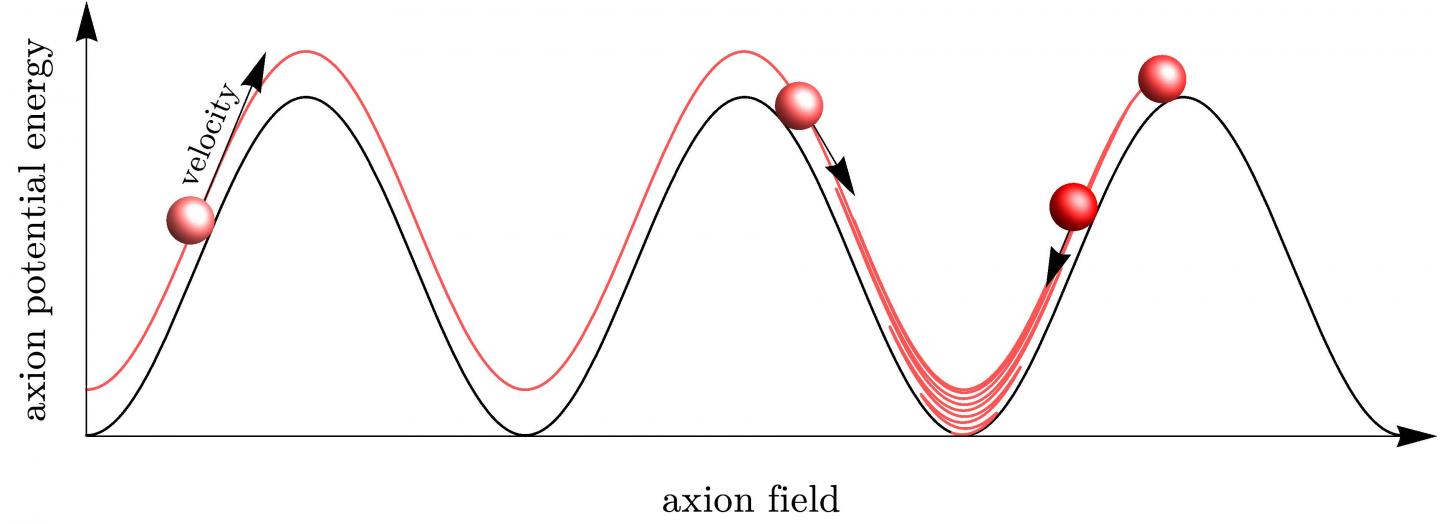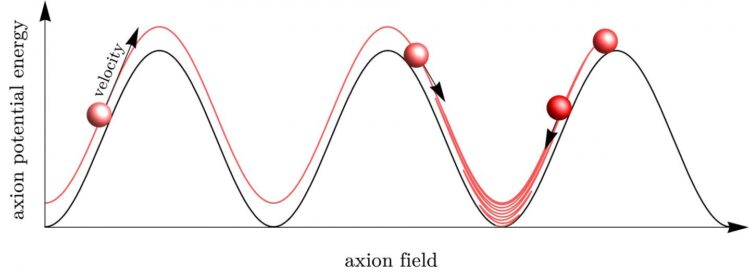New research findings from the IAS, University of Michigan, and UC Berkeley

Credit: Co & Harigaya
In a new study of axion motion, researchers propose a scenario known as “kinetic misalignment” that greatly strengthens the case for axion/dark matter equivalence. The novel concept answers key questions related to the origins of dark matter and provides new avenues for ongoing detection efforts. This work, published in Physical Review Letters, was conducted by researchers at the Institute for Advanced Study, University of Michigan, and UC Berkeley.
The existence of dark matter has been confirmed by several independent observations, but its true identity remains a mystery. According to this study, axion velocity provides a key insight into the dark matter puzzle. Previous research efforts have successfully accounted for the abundance of dark matter in the universe; however certain factors, such as the underproduction of axions with stronger ordinary matter interactions, remained unexplored.
By assigning a nonzero initial velocity to the axion field, the team discovered a mechanism–termed kinetic misalignment–producing far more axions in the early universe than conventional mechanisms. The motion, generated by breaking of the axion shift symmetry, significantly modifies the conventional computation of the axion dark matter abundance. Additionally, these dynamics allow axion dark matter to react more strongly with ordinary matter, exceeding the prediction of the conventional misalignment mechanism.
“The extensive literature on the axion was built upon the assumption that the axion field is initially static in the early universe,” stated Keisuke Harigaya of the Institute for Advanced Study. “Instead, we discovered that the axion field may be initially dynamic as a consequence of theories of quantum gravity with axions.”
Two members of the research team, Keisuke Harigaya and Raymond Co, previously explored the concept of axion dynamics in the study “Axiogenesis,” which explained how the excess of matter over antimatter could be due to a nonzero initial velocity of the QCD axion field. This study also provided a framework for generating new insights into the questions surrounding dark matter.
“This new kinetic misalignment mechanism predicts an axion with a larger interaction strength and may be discovered in planned experimental searches,” stated Raymond Co of the University of Michigan. “Our discovery of new axion dynamics thus opens up unexplored research avenues for theoretical and experimental particle physics and cosmology.”
To date, the axion has proven incredibly versatile. The particle was originally proposed to solve the mystery of why neutrons do not interact with an electric field despite having charged constituents. Former IAS Professor Frank Wilczek, who coined the term axion, published his landmark findings in 1978 in Physical Review Letters while a Member of the Institute for Advanced Study’s School of Natural Sciences.
###
The published article is available here.
About the Institute
The Institute for Advanced Study is one of the world’s foremost centers for theoretical research and intellectual inquiry. Located in Princeton, N.J., the IAS is dedicated to independent study across the sciences and humanities. Founded in 1930 with the motto “Truth and Beauty,” the Institute is devoted to advancing the frontiers of knowledge without concern for immediate application. From founding IAS Professor Albert Einstein to the foremost thinkers of today, the IAS enables bold, nonconformist, field-leading research that provides long-term utility and new technologies, leading to innovation and enrichment of society in unexpected ways.
Each year, the Institute welcomes more than 200 of the world’s most promising researchers and scholars who are selected and mentored by a permanent Faculty, each of whom are preeminent leaders in their fields. Comprised of four Schools–Historical Studies, Mathematics, Natural Sciences, and Social Science–IAS has produced an astounding record of introducing new understanding and is responsible for undeniable progress across disciplines and generations, from the development of one of the first stored-program computers to the establishment of art history as a discipline in the United States. Among its present and past Faculty and Members are 34 Nobel Laureates, 42 of the 60 Fields Medalists, and 19 of the 22 Abel Prize Laureates, as well as many MacArthur Fellows and Wolf Prize winners.
Media Contact
Lee Sandberg
[email protected]
Original Source
https:/
Related Journal Article
http://dx.





